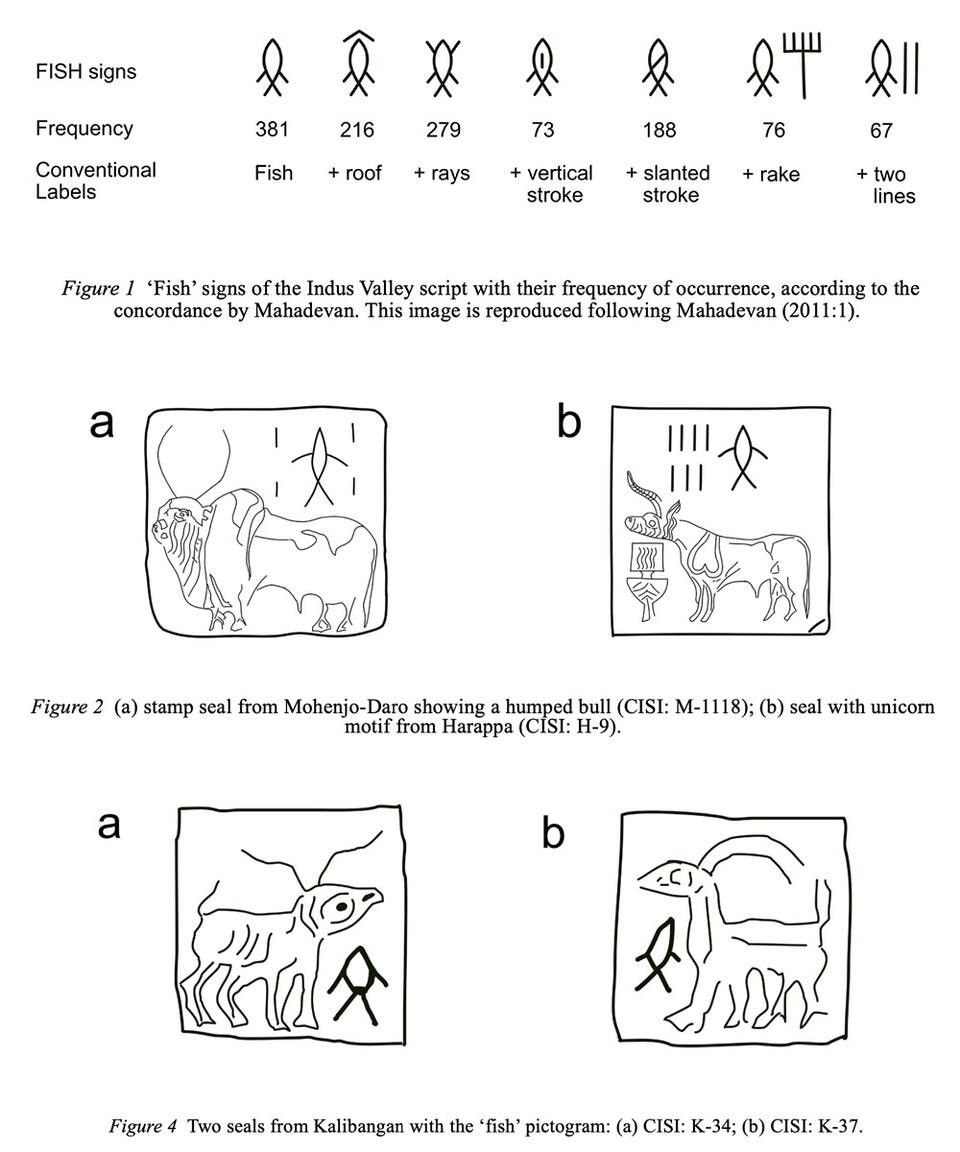The writer, who teaches at CNRS/Université Paris-Saclay in France, has come up with a paper rich in historical and epigraphical associations that complexify and simplify thinking about one of the most important signs on Indus seals, "nearly ten percent of all textual matter" (p. 87). It is also the one sign with the most agreement, even if unproven directly. As early as the 1930s, Father Hera suggested it had to do with the homonym min that referred to both "fish" and "star" in Old Tamil. Many, including Asko Parpola have accepted and built upon it in ways that seem pretty convincing, although Mahadevan later felt it had more to do with apsaras or water nymphs (though this author later suggests a relationship between the two).
Nonetheless, whether or not one accepts the "Heras conjecture," Sengupta then goes on into a formidable analysis around the fish as a symbol of authority and kingship, and looks at early Vedic and other sources to paint a rich world of this pictogram, culminating in a longer discussion of the Matsya Kingdom in ancient Rajasthan. Matsya is the Sanskrit word for fish.
One of the best things about the author's approach is that he is judicious in weighing evidence, notes where doubts exist, and does not jump to conclusions even while unraveling a long set of connections that the fish pictogram has to clans, ruling groups, stories in the Mahabharata and Vedic tribes, the complex undercurrents of Sanskrit and non-Sanskrit roots. For example, he writes (p. 92):
"The Mahābhārata (1.57) recounts a legend of a fish giving birth to human children – a daughter and a son. The fish was an apsarā (nymph) cursed to stay in the water in the form of a fish. The daughter, Satyavatī, was brought up in the community of fisherfolk, and her son Vyāsa is traditionally acknowledged as the author of the Mahābhārata, but what happened to the boy born with Satyavatī is not elaborated. It is just mentioned that he went on to become a pious king named Matsya. This small bit of information is significant. This legend is a cursory reference to a kingdom named after fish, and the lack of detail indicates that the chroniclers of the epic were not familiar with the origins of the Matsya people and were compelled for some reason (presumably political) to invent an origin story. The Śatapatha Brāhmana has a passage (13.4.3.12) which, in reference to King Matsya Sāmmada, says (Eggeling 1966: 369): 'his people are the water-dwellers, and they are staying here; both fish and fishermen have come thither.' This was a riverine community, and the identification of the people and the country with fish symbolism was apparently a deep-rooted custom."
The depth of the analysis increases as the author turns to the fish emblem used by the Pandyas, on coins no less – "the dynastic motif of the Pandyas was the fish" (p. 94). There is a deeper discussion of the flood myth in ancient civilizations, and the possibility that this myth (something might well have happened to produce it) originated in ancient Mesopotamia but was "remembered" in ancient India.
There is a lot more to the connections brought up in this paper, and they seem to cohere, but of course more analysis, not to mention information on neighbouring Bronze Age cultures like the Ganeshwar-Jodhpura Cultural Complex or the Ahar-Banas Culture is needed. There are also important threads to follow into early Tamil Sangam literature and developments in the Historic period in the Gangetic plain among the new people and organizational systems appearing there. In short, a sober, deeply interesting and thought-provoking analysis that helps to potentially unlock an important Indus sign and unpack its reach, simultaneously, into recent and ancient history.

